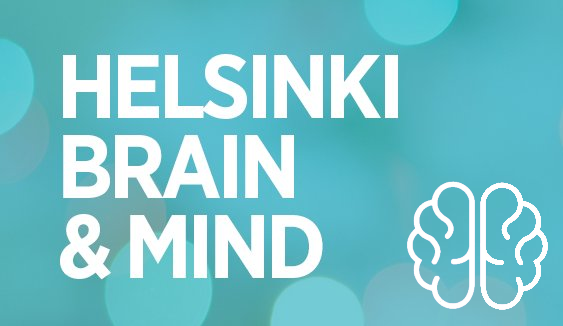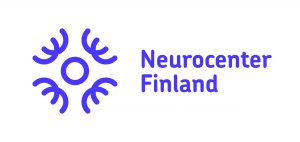Helsinki Brain & Mind brings together neurobusiness and neuroscientists at a local level

Helsinki Brain & Mind is swiftly building multidisciplinary cooperation in neurosciences in the Helsinki metropolitan area. In addition to research cooperation, the main goals are to promote business collaboration and create conditions for the emergence of innovations in the field of neurosciences.
As the population ages, neurological diseases have become more common. They are accompanied by mental disorders, which pose a significant societal burden due to their cost and human suffering. Solutions produced through multidisciplinary collaboration are the key to overcoming cost increases.
More than 50% of brain research in Finland is concentrated in the Helsinki metropolitan area. It is the product of long-term development by the University of Helsinki, Aalto University, HUS and the local sector research institutes.
To accelerate collaboration, the University of Helsinki, Aalto University and HUS have established the Helsinki Brain & Mind (HB&M) network, which combines basic research, clinical research and technological research and development, thus providing an abundant starting point for new research and solutions.
A platform for testing operating models
With the contribution of Neurocenter Finland, the construction of the network has received ERDF funding of 500,000 euro for two years. Its coordinating unit is the Neuroscience Centre at the University of Helsinki. Since the establishment of the Neurocenter Finland, the network has been operating as its regional co-operation network in the Helsinki metropolitan area.
‘The goal is to create a platform and structure for collaboration by the end of 2021. We are testing different operating models regionally, the most effective of which can be scaled and utilized at a national level’, sums up Anne Patana, Head of Development of Helsinki Brain & Mind at the University of Helsinki.
One goal is to build a concept called NeuroBiodesign, which aims to pragmatically generate new needs-based innovations for neurosciences. The first NeuroBiodesign project is being launched together with the City of Helsinki at Helsinki City Hospital.
‘At Biodesign, multidisciplinary teams can walk into clinics to spot practical challenges. Based on their findings, they can decide what kind of challenges will be addressed. In addition to the medical sphere, this could also be applied, for example, in education or rehabilitation’, Patana envisions.
Past the barriers of cooperation
Cooperation between businesses, universities and clinical research has been identified in the neuroscience field as one of the preconditions for the emergence of innovations. However, finding forms of cooperation that satisfy all parties has often proved challenging in practice. HB&M seeks to identify obstacles to collaboration so that they can be removed.
‘The business, university and medical worlds are very different in their goals and basic rhythms. It could be fruitful for innovation to involve companies already in the basic research phase, but it can be difficult to justify commercially. The number one task for hospitals is to care for patients, so it can be difficult to allocate resources to product development’, Patana illustrates.
‘Besides, interviewed business representatives have said that contractual matters have been the cause of many headaches already in the outset of collaboration.’
Information for everyone to use
The neuroscience ecosystem in the Helsinki metropolitan area therefore already exists, but it can be significantly enhanced by clearly consolidating its activities and increasing coordination. Consequently, HB&M’s first task has been to find out what the current state of affairs in the neuroscience field is in Helsinki.
‘We are mapping research activities related to the neuroscience ecosystem; finding out which companies are working on something neuroscience-related and how they could be helped. We are also discovering the types of training offered and what kind of events there are. What is being researched in general and who do research groups consist of? Additionally, we find out who’s who in the innovation ecosystem, as well as all the neuroscience infrastructure, such as systems, databases and hardware, to be found in the Helsinki metropolitan area’, Patana reveals.
The idea is to do a baseline mapping and compilation of all relevant industry information in one place for use and sharing by all stakeholders. For example, information on neuroscience research teams is compiled into an online database, where both researchers and companies can find suitable partners.
There are extensive data warehouses too, such as HUS’s patient data lake and biobank, which are part of the key infrastructure in the field of neurosciences.
‘There is a lot of discussion about this: How could these resources be used not only in research but also in product development?’ Patana ponders.
We are Helsinki Brain & Mind
The operations of the Helsinki Brain & Mind network are guided by a steering group consisting of experts from all three organizations, chaired by the vice-rector for research at the University of Helsinki. The smaller executive team prepares matters and takes care of the implementation of the agreed matters, and can meet if necessary for matters that require a quick response.
Head of Development Anne Patana, University of Helsinki
– Cell biologist, doctorate on biosciences from the University of Helsinki
– Led the exploratory project of Neurocenter Finland
– Leads the development of Helsinki Brain & Mind
Coordinator Verna Sarajärvi, University of Helsinki
– Maps neuroscience research groups, conducts business collaboration interviews, designs the research group portal and the website
– Doctorate in neurosciences from University College London
– Works part-time (50%) at Helsinki Brain & Mind
Project coordinator Sara Lindholm, University of Helsinki
– Maps neuroscience teaching and seminars
– Works part-time (10%) at Helsinki Brain & Mind
Application Designer Paula Tanni, HUS
– Works with HUS’s data lake and handles requests regarding neurosciences
– Uncovers the types of neuroscience data HUS has in general and designs processes to help researchers and companies their data needs
Innovation agent Dovile Kurmanaviciute, Aalto University
– Maps the innovation ecosystem, plans innovation seminars and develops the Neurobiodesign concept
– Works part-time (40%) at Helsinki Brain & Mind
